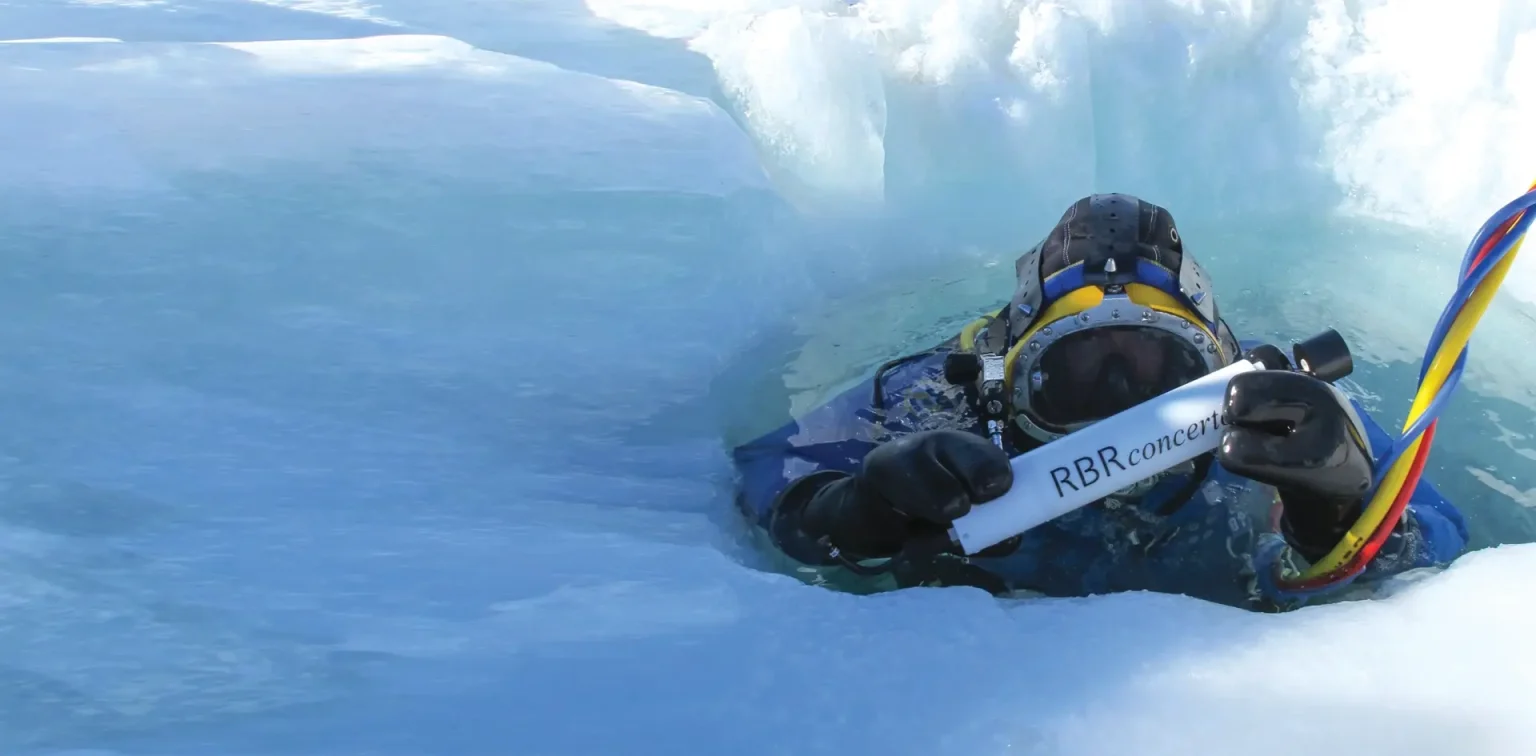
Frequently Asked Questions
Find answers to common questions about data communication protocols, power options, sensor selection, and more.
Data Communication
Can I use RS-485 transmission?
Yes, instruments can be configured to transmit real-time using full-duplex RS-485.
On RBRvirtuoso, RBRduo, and RBRconcerto instruments, the logger needs to have the appropriate
external battery endcap (USB, RS-232, or RS-485) for the required external communication mode,
as the wiring differs between the options. Ruskin is then used to configure the instrument
with the appropriate streaming data serial option. For RS-485 communication, you will also need
an RS-485 converter at the receiving end.
Is it possible to read real-time data from my logger?
An external waterproof connection can be fitted to most RBR data loggers as an optional extra
at the time of manufacture.
My logger doesn’t communicate
First, verify that you have a connection through the COM port on your computer.
- Ruskin automatically connects to the logger by searching for the COM port the CPU has assigned to the USB port. This process may take up to one minute.
- Once found, the logger appears in the Navigator Pane. If your logger is not listed and COM X → “Transport Enabled” is displayed, there is a communication issue.
Still can’t communicate?
- Ensure you are using the correct download cable and test it with another RBR instrument if possible.
- Check that USB drivers are installed on your computer. In Ruskin, go to Instruments → Install Logger USB Driver.
- Reset the logger: Unplug it, remove the batteries, wait five minutes, then reinstall the batteries.
- For legacy instruments (XR, TDR, TR, etc.), replace the batteries with fresh cells.
What communications options are available?
All current RBR instruments support USB as standard. In the Compact Logger family (RBRsolo, RBRduet),
the micro USB connector is used internally, while the Standard Logger family (RBRvirtuoso, RBRduo,
RBRconcerto, RBRmaestro) uses a 30-pin Apple connector.
What is the maximum cable length for serial RS-232 transmission?
RBR uses generic RS-232 protocol. The maximum length depends on the cable quality and baud rate, but
we have had success beyond 200m at 9600 baud.
Power
Is it possible to use external power with my logger?
Instruments with an external data connection, such as RS-232 or RS-485 (FD) include the option of externally powering the instrument.
Sensors
What is the difference between Turbidity and OBS and TSS?
Sometimes there are different terms which mean the same thing. Turbidity is a quantity measured by optical back-scatter of light and OBS stands for Optical Back-Scatter. TSS or Total Suspended Solids is also a quantity measured using optical back scattering.
Turbidity and TSS are essentially the same parameter. Although turbidity purports to measure approximately the same water quality property as TSS, the latter is more useful because it provides an actual weight of the particulate material present in the sample. The relationship between turbidity and TSS (total suspended solids) depends on the nature of the solids, but all turbidity sensors measure optical back scatter.
Here is the description from the Seapoint site:
“The Seapoint Turbidity Meter is a very low-power, miniature sensor that detects light scattered by particles suspended in water, generating an output voltage proportional to turbidity or suspended solids.”
And here is the description from the D&A site:
“The OBS®-3+ sensor measures suspended solids and turbidity by the optical back-scatter method (ASTM 6677). It features a compact micro probe that responses almost linearly over a 1000-fold change in sediment concentration (SSC) and turbidity.”
It amounts to exactly the same thing. The responsibility for calibration from turbidity to TSS in either case rests with the user.
When should I use a DO Optode sensor rather than a galvanic DO sensor (Oxyguard)?
It depends on your application and budget. Both the galvanic cell sensor and the optode sensor are accurate instruments. The optode is more expensive than the galvanic cell sensor, but long term can be more stable, and does not require periodic refurbishment and recalibration. The Oxyguard has a lower initial cost, but does require periodic refurbishment and recalibration by the end user to ensure it is accurate measurements. Normally for short duration deployments we recommend the galvanic sensor, but for deeper and longer deployments, we recommend the optode.
You offer two types of depth gauges – how do I choose one over the other?
Yes we offer two types, one is a strain gauge and the other is a quartz crystal. The strain gauge is what we recommend for most applications as it has an accuracy of 0.05% full scale accuracy, while the quartz sensor has an accuracy of 0.01% full scale. So depending on the accuracy of the depth you need the choice should be based on these characteristics.
You offer two types of DO sensor and two types of fluorometers. Why and what is the difference between them?
When we can we try to offer sensors in different price and accuracy categories or for special purposes.
In the case of the DO sensors we offer a Galvanic cell sensor and an Optode. The galvanic cell sensor is less expensive than the optode but requires more routine maintenance to keep it operating effectively.
With regard to the fluorometers, our standard offering is either the Turner Cyclops-7 and the Seapoint fluorometer. The selection depends on the depth rating required 6000m or 600m and the range (µg/l) of the measurement (up to 150 µg/l or 500 µg/l), as well as pricing and power requirements. The Turner sensor is a less expensive sensor, but does have higher power requirements which would limit possible deployment life for deployments without external power supply to the instrument.
Availability
Can you make multi-channel loggers with configurations that are not on your list?
RBR prides itself on the flexibility of its products. While not all configurations are possible due to mechanical or electronic requirements, we are happy to review any sensor requirements to determine feasibility.
Software
How can I update my firmware?
The firmware on our latest generation of instruments (RBRvirtuoso/duo/concerto/maestro, RBRsolo/duet) is field upgradable through our Ruskin software. If you are running Ruskin on a computer connected to the internet, and plug in a logger, Ruskin will automatically check if a new firmware version is available, and will ask you if you would like to upgrade your logger. You can also manually upgrade the firmware in Ruskin, under the Instruments menu, select Upgrade logger firmware.
Firmware updates for legacy instruments such as the XR series or TDR instruments may not be possible depending on the age of the instrument. If the firmware can be updated, it will require the instrument to be returned to the factory, and the upgrade would be a chargeable service item.
